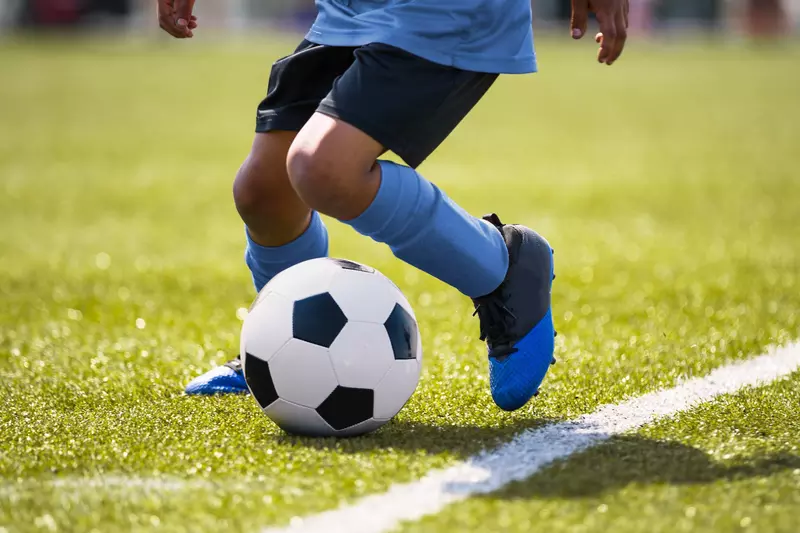- AdventHealth

AdventHealth and Rothman Orthopaedics are joining forces to lead in pioneering research and innovative care in Central Florida. Together, we’re transforming the field of orthopedics. This article originally appeared on RothmanOrtho.com.
Fall sports are approaching, and summer camps and pre-seasons are in full swing. Staying informed on what types of injuries athletes typically face will help you be prepared during your training. You’ll be able to better understand symptoms so you can identify an injury rather than ignoring it. Find out how these injuries occur and how you can prevent them to have a strong, successful season. Learn more about common sports injuries that athletes are most susceptible to.
Overuse Injuries
Overuse injuries are very common, especially in athletes who focus mainly on one sport. In fact, half of all sports medicine injuries in children and teens are from overuse, reports the American Academy of Pediatrics.
An overuse injury occurs from the same, repetitive motion during long hours of practice, games, and little rest. Intense training following a summer of little activity puts a lot of stress on bones, muscles, ligaments and tendons.
Think about the motion of throwing a football. Your shoulder, elbow and wrist joints are all involved in this movement, and doing it over and over again during practice and games can start to cause wear and tear. Many shoulder injuries are a result of overuse, including tendinitis and bursitis.
Coaches will mix up training sessions with workouts that exercise various body parts to avoid repetitive motions, especially when the season is just beginning. It’s also important that regular breaks are given and longer rest periods follow. Athletes should take their off days seriously and rest their muscles and joints to avoid overuse injuries.
Shin Splints
One overuse injury that plagues many at the beginning of the season is shin splints. Shin splints are pain and tenderness that run through the lower leg bone, known as the tibia. It’s an aching pain that feels like it needs to be stretched and massaged. This occurs in athletes who engage in sports with a lot of running, such as soccer.
Athletes usually feel these symptoms at the start of the season, when they begin running more than they are used to or increase activity too quickly.
Running on a hard surface like concrete or road asphalt can also increase the risk of shin splints, while running on softer surfaces like grass will reduce the risk. Worn shoes can also contribute to symptoms. Taking a day or two off from running, icing the area, and wearing shoes with good arch support can reduce pain and help with recovery.
Stress Fractures
Stress fractures are small cracks in bones that can extend over time. These bones are absorbing shock that the muscles are too tired to absorb. The bones can’t support this stress - so they give way and crack.
Athletes who play sports that involve a great deal of running or jumping are most vulnerable to stress fractures. The most common site for stress fractures are the metatarsals in the feet. Stress fracture pain develops gradually, rather than a sharp pain all at once. There usually isn’t any other sign of injury, other than slight swelling. It’s common for athletes to continue training without dealing with their injury as it doesn’t seem like anything serious.
When dealing with a stress fracture, a doctor will advise you to rest and avoid putting weight on the injured bone to allow the bone to heal. This could take about 6-8 weeks. If the bone is severely fractured, a surgical procedure may be required to pin the bone together. This only is necessary in rare cases.
Ligament/Cartilage Tears or Sprains
When a joint is forced into an unnatural position and stressed beyond its normal range, ligaments and cartilage stretch and could even tear. As athletes are constantly changing direction and colliding with others, or with equipment, joints are constantly dealing with stress.
Because joints are weight-bearing, they’re more susceptible to injury. (Learn more about ligament tears here.)
The twisting of an ankle or knee, landing awkwardly after coming down from a jump, and extending to make a play are all examples of how athletes tear or sprain ligaments or cartilage. Common examples include a sprained ankle or wrist injuries.
Symptoms of torn or strained ligaments include:
- Extensive inflammation and swelling, which can also result in pain, numbness, tingling and pressure around the site of the injury
- Warm to the touch
- Popping or cracking noises
- Joint instability
- Inability to bear weight on the limb
If you’re experiencing any of these symptoms, it’s crucial to contact a physician at the first sign of injury. The injury can worsen, resulting in a more serious injury and additional pain.
Over-the-counter medications may help to reduce inflammation and pain. It is important to limit the amount of movement of the injured area as much as possible until you can consult with a physician.
Muscle Strains
A muscle strain is similar to a ligament sprain - it’s the stretching or tearing of the muscle when it’s forced beyond its capacity. The severity of the sprain depends on how badly the muscle fibers are stretched. In some cases, only a few fibers are stressed, leaving the remaining muscle intact. When the muscle fibers are torn, the muscle is unable to function properly and will require a more lengthy healing process.
Any type of athletic activity poses a threat for some type of muscle strains, but tend to happen frequently in contact sports, such as football, as well as sports that require quick change of motion such as soccer, lacrosse, basketball and tennis.
Symptoms of muscle strain include:
- Muscle pain and tenderness, especially after an activity that extends the muscle
- Pain usually increases when you move the muscle but is relieved by rest.
- Muscle swelling, discoloration or both
- Muscle cramp or spasm
- Decrease in muscle strength
- Complete loss of muscle function
- A pop in the muscle at the time of injury
- A gap, dent or other defect in the normal outline of the muscle
Although these injuries are common and are difficult due to the nature of contact sports, warm up exercises and proper stretching can help athletes avoid them as much as possible. Find out more about what you can do to prevent these injuries during the fall sports season.
Here to Keep You Healthy
Have you heard? We've joined forces with Rothman Orthopaedics, one of the nation’s top orthopedic programs, to create a groundbreaking, comprehensive specialty network that is the new gold standard in quality, innovation, research and whole-person care.
This visionary partnership will expand the possibilities for world-class treatment for a variety of orthopedic services, including joint replacement, fracture care, reconstruction of the knee, shoulder, elbow and hand and treatments for arthritis and osteoporosis. Together, our leading-edge providers comprise a powerhouse of innovation focused on developing new treatments and widening accessibility to top-level care while raising the bar for orthopedic excellence.
Learn more at TransformingOrtho.com.



